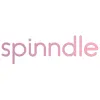Take a look inside 4 images
Spinndle
Pros: Helpful tutorials, templates. Supports independent and collaborative work. Builds life and career skills.
Cons: Takes time to set up (and potentially reframe your curriculum). Teachers will need a clear picture of what they'd like for students to accomplish and how.
Bottom Line: This platform gives teachers options for structuring a learning experience that students truly own.
How Can I Teach with This Tool?
Teachers can use Spinndle to make project-based learning (PBL) more manageable. If you have an existing PBL unit, or even a lesson with a project-based component, you might start by using Spinndle to re-create it. However, even so it might be best to explore the library of projects or templates to get a sense of the way Spinndle approaches project design. One thing you'll notice is that while teachers set up the experience, students drive it. Teachers provide the initial framework and instructions for projects in the form of Stages, Pathways, and Tasks, and then it's up to students to add and manage group tasks, communicate with their peers, and show specific evidence of learning and task completion. In this way, Spinndle does a good job of offering both teachers and students a flexible starting point for a learning journey that evolves over time based on student input. Teachers monitor things and provide feedback as needed.
Students can use Spinndle to design passion projects, analyze literature, present research to their peers, and more. These tasks can stretch from simple individual or group projects to extended PBL opportunities. Regardless of the type of project, students must use their social and emotional learning (SEL) and executive function skills. They'll need to communicate effectively, manage time and tasks, and take charge of their learning. Group members post content, communicate with peers and teachers, and track the group's progress through the project feed. This enables them to see group members' activities and provide feedback and reminders to keep things flowing.
Teachers can differentiate by assigning content to individuals or groups and/or by providing feedback and reference resources as needed. As projects evolve, teachers will want to check in on the project feeds regularly to see who's posting what and who might need support or a nudge in the right direction. This helps with accountability and targeted support. Ultimately, this is a tool that'll work best when well-structured by teachers and with appropriate student buy-in and responsible participation. This'll take some norm- and expectation-setting up front, especially because the design doesn't have a lot of flash, dash, and gamification to it. This means intrinsic motivation, driven by absorbing projects and meaningful collaboration, will be the key to success.












